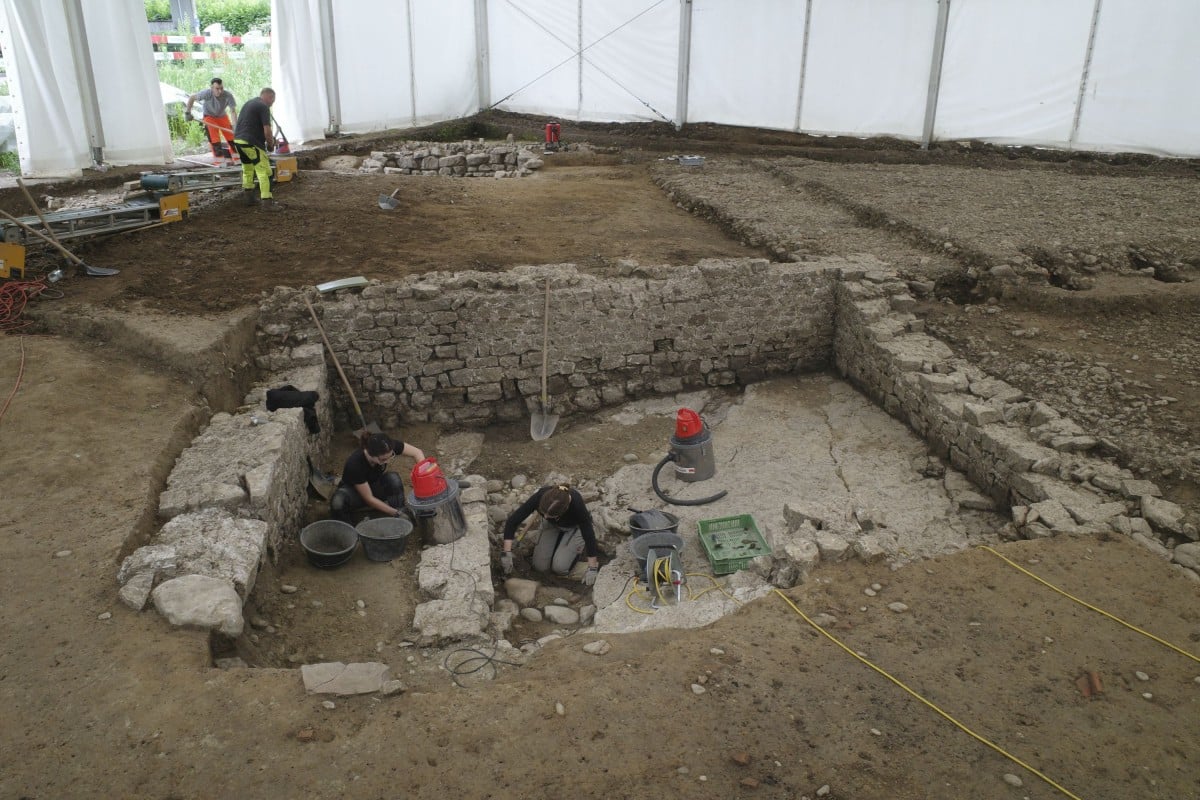Ancient Roman Road, Bronze Panther Found in Switzerland
Source: GreekReporter.com

Archaeologists in northern Switzerland have uncovered a section of an ancient Roman road and a rare bronze panther figurine during a major excavation in Kaiseraugst, near the German border. The discovery offers insight into everyday life in Augusta Raurica, founded nearly 2,000 years ago.
Excavation tied to planned housing development
The excavation occurred between May 2024 and March 2025 ahead of a construction project involving three apartment buildings and a shared underground garage.
The site lies within the lower town of Augusta Raurica, a Roman settlement founded in 44 BCE near today’s Basel and known as one of the best-preserved Roman cities north of the Alps. Archaeologists also identified later-Roman-period graves just north of the construction plots, part of a larger burial ground.
Early surveys guided a careful excavation plan
Before digging began, researchers conducted non-invasive surveys in 2019, followed by further studies in 2021 and 2023.

These early investigations helped guide a precise excavation plan. With the property owner’s cooperation, the project was adjusted to protect the nearby Late Roman graves.
Roman road and urban layout were brought to light
The excavation uncovered a segment of a Roman road nearly four meters wide. Over time, the street had been repaired and widened.
It was lined with drainage ditches and shaded by columned walkways on both sides, offering a clear picture of Roman infrastructure and city planning.

Nearby, archaeologists uncovered several buildings, including a large stone structure with a basement and another partially excavated house. These underground spaces were well-preserved and yielded many artifacts.
Some plots also revealed simpler wooden buildings, showing a mix of construction styles. The long, narrow homes with shared layouts were identified as strip houses – common Roman dwellings lined along streets.
Courtyards revealed infant graves and wells
The team found several stone-lined pits and wells in the courtyards. Researchers are still investigating whether these were used for storage or as latrines. They also documented multiple infant burials, located inside homes and in the yards.

During Roman times, infants were commonly buried at home rather than in public cemeteries. These small graves reflect personal care and the high infant mortality rate of the era.
Rare finds include a bronze panther and mosaic glass
The site was occupied from the late 1st century to the 3rd century CE, with signs of later Roman use confirmed by numerous coins and objects.
Among the most striking discoveries were a bronze figurine of a panther, a votive altar carved from soft stone, and a colorful glass spindle whorl made using mosaic techniques.
These rare artifacts provide a vivid glimpse into the personal lives, beliefs, and craftsmanship of the people who once lived in Augusta Raurica.
The original article: belongs to GreekReporter.com .
